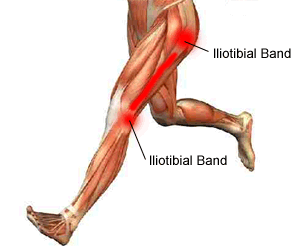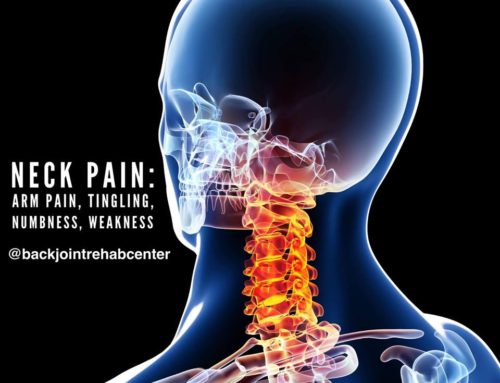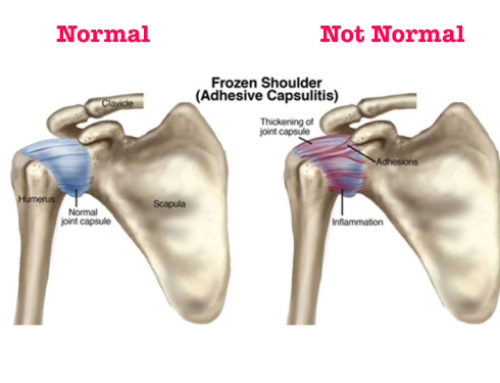PART 2: IT BAND SYNDROME
In the second part of the Runners Series, we discuss the pain and problems associated with IT Band Syndrome. Through this article, you will identify characteristics associated with true IT band syndrome. This will help you differentiate between IT Band Syndrome and other problems so you return to running pain free.
If you missed the first part of the Runners Series and would like to learn about Runners Knee aka Patellofemoral Pain Syndrome, click on the link below:
IT Band Syndrome is described as a condition that produces pain in the area of the Iliotibial Band. The Iliotibial Band connects from the hip to the lateral aspect of the knee. The IT Band is a thick fascia that completely ensheaths the thigh. It is made of a dense connective tissue that is very strong, tough, and avascular (does not receive blood). That is what makes it a incredibly strong connecting various muscle groups supporting the use of the hip and knee.
The IT band does not have fibers that allow it to contract. A muscle or tendon has fibers that allow themselves to contract. The fascia is not contractile. It cannot contract. The IT Band functions to reduce friction produced with muscular force. It provides less rubbing and friction when the surrounding muscles are used.
In activities where the muscles of the quadriceps, hip flexors, and supporting muscles of the hip are frequently overused, the area of the IT band becomes painful, tight, and is limiting range of motion. Any pain on the lateral aspect of the thigh is generally identified as IT Band Syndrome.
There are many conditions that can produce lateral thigh pain and mimic IT Band Syndrome. So, “true” IT Band Syndrome will have expected characteristics in the way pain is produced, reduced, and responds.
IDENTIFYING “TRUE” IT BAND SYNDROME
IT Band is a tissue; a dense piece of connective tissue utilized by contractile muscle fibers. Because of its anatomical make up, it has specific physiological mechanism of how it behaves and responds.
The Physiological Response of “Tissue” is SLOW TO CHANGE. The Time Frame to Elicit Change is a Key Identifying Factor of IT Band Syndrome.
“Tissue” includes muscular tissue, ligamentous tissue, fibrotic collagenous tissue aka scar tissue, adipose tissue (fat), and many other forms of connective tissue; some include fibrous & synovial layers of membranes (aka joint capsule).
The amount of time necessary to elicit change is reflected by the make-up of the structure and the amount of blood supply. Muscles have more blood supply than tendons. Tendons have more blood supply than ligaments. Fascia is avascular, meaning it has no blood supply.
An influence that blood supply has on tissue is reflected in the timeframe to elicit change when comparing muscle to tendon to ligament to fascia.
Muscle can elicit change sooner than a tendon. A tendon can elicit change sooner than a ligament. A ligament has poor blood supply; very minimal and poorly supplied, but that is what makes ligament dense, strong, and resilient. The fascia has NO BLOOD SUPPLY making it VERY SLOW TO ELICIT CHANGE.
Let’s put it to perspective. When you lift weights, can you look like Arnold Schwarzenegger the next day? The next week? The next month? The next year? Depending on the amount of change you want to see in tissue, it HAS to reflect a prolong period of time to match the desired changes. To gain big muscles like Arnold, you have to lift weights frequently, consistently, routinely, and for a prolong period of time. You have applied a stress to the muscle tissue that DURING the exercise, you feel discomfort produced from fatigue. Immediately AFTER the exercise set, you rest of few minutes and the discomfort disappears. So, you do another set and another set, and another. Each time, each set, the response is consistent; DURING the exercise, you feel discomfort produced from fatigue, immediately AFTER the set it begins to fade away until it disappears. If you do more sets and training on that muscle, THEN, you are sore for the next 48-72 hour; then the soreness fades away and you return to lifting weights. This process is repeated over and over until you get the desired muscular change.
So, Let’s Go Back to the IT Band. You Have Pain on the Lateral Aspect of the Thigh.
If it is “True” IT Band Syndrome, Expect the Following:
- The Lateral Thigh Pain Remains in the Same Location; Pain Does NOT Travel or Move
- At Rest, You Have No Pain
- Pain is Intermittent, NOT Constant
- Pain is Consistent, NOT Random (Meaning, Every Time You Use that Tissue with that Activity, it Produces Pain)
- Pain is Produced When You Contract the Muscles of that Area
- During the Activity, You Feel Pain; Immediately After Activity, You Feel No Pain (However, if You Exceed a Certain Threshold of Activity, You Will Produce Inflammation for the Next 48-72 Hours at Which Now the Pain is Constant; You Mechanically Produced Inflammation)
- The Time Frame Expected to Elicit Change Will be a Long Time (Research & Literature Have Demonstrated 6-8 Weeks to See Change, and 16-24 Weeks to Fully Resolve)
Because the IT Band is a dense connective tissue with no blood supply, the pain response is consistent and slow to change. It is never random, and never will you experience “good days or bad days”; each day is consistently a “bad day” for a prolonged period of time, until the tissue elicits a change, THEN, you will begin to notice consistent “good days”.
Now, try to review your pain presentation with the proposed IT Band Syndrome diagnosis.
Has your pain response presented in the fashion described above? Or does your pain move? Is it random? Is it inconsistent, some days you feel it, some days you do not feel it?
If your pain presents as described above, you do have a true case of IT Band Syndrome. If your pain does not present as described above, you do NOT have a true case of IT Band Syndrome.
For Those of You Who Have True IT Band Syndrome, There are Several Treatment Options Available:
-
Stretching
-
Foam Rolling
-
Massage
-
Soft Tissue Mobilization
-
Rest or Reduced Running Frequency
-
Modify Running Program
If you have found yourself NOT having true IT Band Syndrome, please give us a call to help find out what is causing your pain! We help people who suffer from IT Band Syndrome and those who suffer with pain in their legs.
We are Dedicated to Get You Better Through Movement…
If You or Someone You Know Struggles with Hip or Knee Pain, Give Us a Call. We are here to help (219)-310-8822.
Dr. Artemio Del Real DC, Cert. MDT, CSCS





